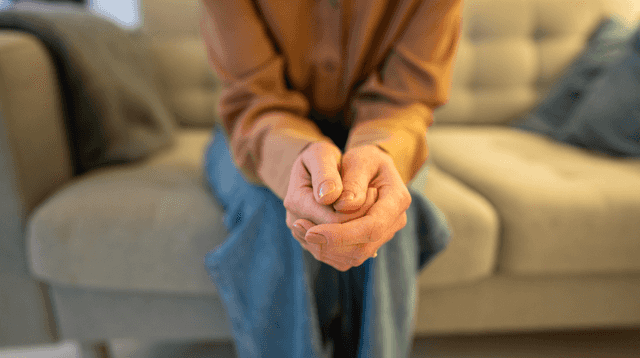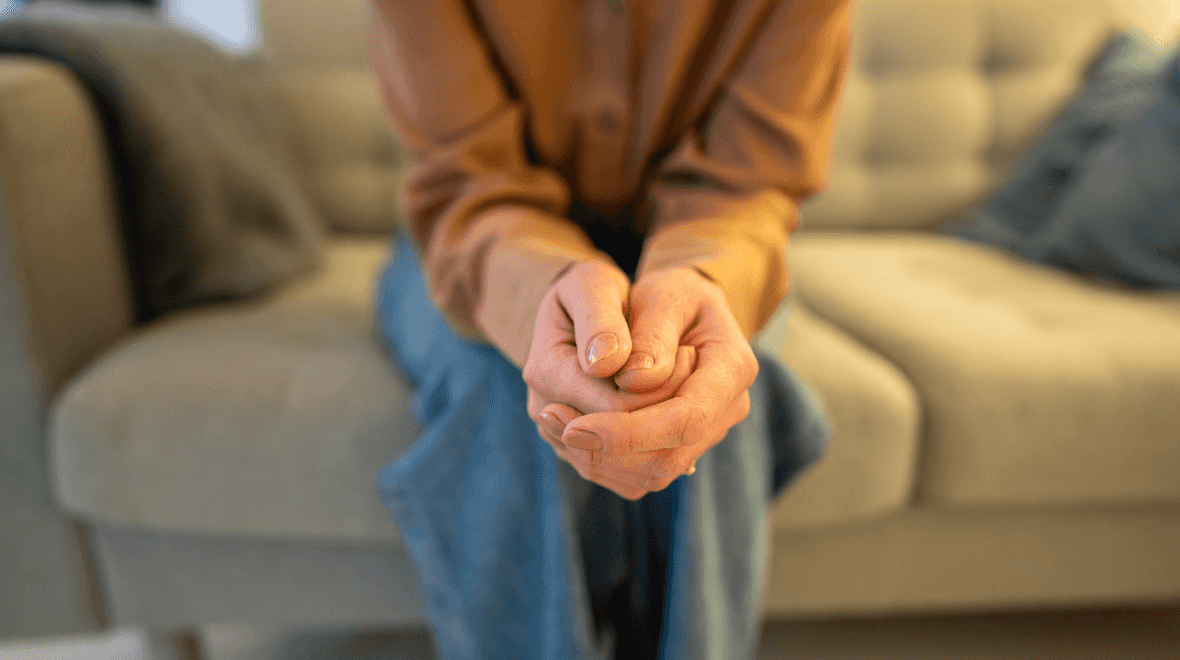"You should know what’s normal, so you can know what's not normal."
Although the rate of women experiencing breast cancer is considerably lower for those in their 20s and 30s, a diagnosis can happen to anyone at any age.
According to the Irish Cancer Society, out of the 3,000 women who are diagnosed with breast cancer in Ireland every year, 200 of these are women under the age of 40.
The signs and symptoms of breast cancer are very much the same no matter what age a person is, however there are certain changes and concerns that may only be applicable to younger women.
Helen Forristal, director of nursing services for the Marie Keating Foundation, tells Her that women who are menstruating should consider their cycle when checking their breasts.
“The signs are much the same no matter the age, but for younger women who might be menstruating it would be useful searching for the signs one or two weeks after their period," she says.
"That’s the ideal time. When you’re menstruating, your breast tissue can appear more lumpy anyway.
"They can look and feel different because of hormonal changes, so about a week after your period is when you should check."

Forristal said that young women can also look at their family history for any aunts, sisters, cousins, or grandmothers who might have developed breast cancer at an earlier age as this can affect the level of risk.
So can starting your periods earlier, having a late menopause, taking oral contraceptives, or not having children.
However, knowing your own body and recognising any changes - no matter how small - can also make a difference.
"Young women can often experience pain and discomfort during menstruation," she says, "so it’s important to notice any changes when your period is finished."
"If a person isn't going to go for a check, they can still be aware of their own body in those first two weeks after their period."
The key changes young women - and older women - should look out for include any abnormal lumps in the breast, armpits, or collarbone area, and any changes in the size, shape, or feel of the breast.
Any changes to the nipple itself are also incredibly important to note, especially if the nipple is crusting, has changed direction, or is painful.
"It could just be an infection, but there's always the chance that it's not," says Forristal.

Breast cancer is the second most common cancer for women in Ireland, with skin cancer being the first. Every year, 2,600 new cases are diagnosed with 660 people dying from the illness.
It is most common in women over the age of 50, but can be diagnosed at any age.
Forristal says that although many young women may not be planning on going for a breast check, there are other ways to ensure that any changes are noted.
The charity has a series of videos
on their website detailing how best to check your breasts at home - by standing in front of a mirror, raising your hands above your head, and looking for any changes.
"You should know what’s normal, so you can know what's not normal," she says.
"It’s important for people to be careful and vigilant when checking. Not just pass it off as a chore.”
You can find out more about the symptoms of breast cancer on the Marie Keating Foundation website here. If you are in any way concerned about your own health you should always contact your GP.
(This article was published first in 2019.)


 Forristal said that young women can also look at their family history for any aunts, sisters, cousins, or grandmothers who might have developed breast cancer at an earlier age as this can affect the level of risk.
So can starting your periods earlier, having a late menopause, taking oral contraceptives, or not having children.
However, knowing your own body and recognising any changes - no matter how small - can also make a difference.
"Young women can often experience pain and discomfort during menstruation," she says, "so it’s important to notice any changes when your period is finished."
"If a person isn't going to go for a check, they can still be aware of their own body in those first two weeks after their period."
The key changes young women - and older women - should look out for include any abnormal lumps in the breast, armpits, or collarbone area, and any changes in the size, shape, or feel of the breast.
Any changes to the nipple itself are also incredibly important to note, especially if the nipple is crusting, has changed direction, or is painful.
"It could just be an infection, but there's always the chance that it's not," says Forristal.
Forristal said that young women can also look at their family history for any aunts, sisters, cousins, or grandmothers who might have developed breast cancer at an earlier age as this can affect the level of risk.
So can starting your periods earlier, having a late menopause, taking oral contraceptives, or not having children.
However, knowing your own body and recognising any changes - no matter how small - can also make a difference.
"Young women can often experience pain and discomfort during menstruation," she says, "so it’s important to notice any changes when your period is finished."
"If a person isn't going to go for a check, they can still be aware of their own body in those first two weeks after their period."
The key changes young women - and older women - should look out for include any abnormal lumps in the breast, armpits, or collarbone area, and any changes in the size, shape, or feel of the breast.
Any changes to the nipple itself are also incredibly important to note, especially if the nipple is crusting, has changed direction, or is painful.
"It could just be an infection, but there's always the chance that it's not," says Forristal.
 Breast cancer is the second most common cancer for women in Ireland, with skin cancer being the first. Every year, 2,600 new cases are diagnosed with 660 people dying from the illness.
It is most common in women over the age of 50, but can be diagnosed at any age.
Forristal says that although many young women may not be planning on going for a breast check, there are other ways to ensure that any changes are noted.
The charity has a series of videos
Breast cancer is the second most common cancer for women in Ireland, with skin cancer being the first. Every year, 2,600 new cases are diagnosed with 660 people dying from the illness.
It is most common in women over the age of 50, but can be diagnosed at any age.
Forristal says that although many young women may not be planning on going for a breast check, there are other ways to ensure that any changes are noted.
The charity has a series of videos 









